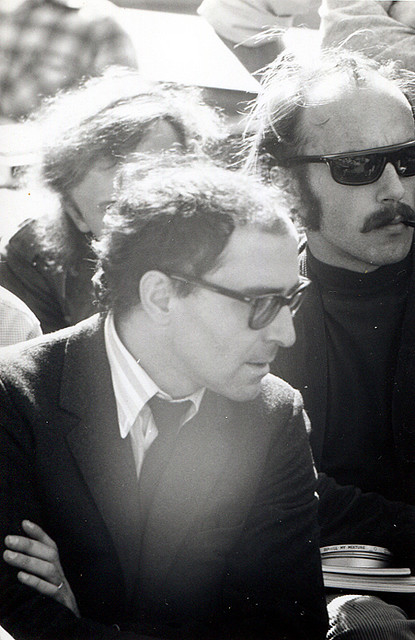Programme
7.00 – 8.20 p.m. My Kid Could Paint That
“My Kid Could Paint That”, 2007, 82 minutes
A look at the work and surprising success of a four-year-old girl whose paintings have been compared to those of Picasso and who has made hundreds of thousands of dollars. Directed by Amir Bar-Lev.
8.35 – 9.05 p.m. Ten Weyngaert, In the Vineyard
The film Ten Weyngaert (In the Vineyard) takes the name and location of a Brussels Community Centre that was built as a utopian space, but is now frequented by disturbed people and remains isolated from the city’s public life. As is often the case with this artist’s work, the cast is comprised of family members, friends and non-professional actors – all familiar people placed in a radically non-familiar situation.
The unfolding action becomes an allegory of human behaviour under social and psychological “pressure.”
9.05 – 9.30 p.m. Bob Ross, Joy of Painting
You’ve probably seen Bob Ross before. He’s the quietly spoken guy painting happy clouds, mountains and trees, using big house-painting brushes and cooing a soothing “you can do it” to the audience. His “Joy of Painting” programme is the most recognized, most watched TV art show in history.
9.30 – 9.40 p.m. Godard, France/tour/détour/deux/enfants
While images from mass media recur throughout Godard’s films, it was only after 1968 and his break with traditional cinematic production and distribution systems that he began focusing specifically on television and video as a subject and medium. In 1972, in a deliberate departure from the commercial filmmaking industry, Godard and Miéville established the alternative production and distribution company Sonimage, based in Grenoble. Through Sonimage, Godard produced a number of pivotal films, including Numéro deux (1975) and Sauve qui peut (la vie) (1980), which are marked by formal and thematic innovations, including the use of video. During this time Godard and Miéville began producing their collaborative work for European television, including two major series, Six fois deux/Sur et sous la communication (1976) and France/tour/détour/deux/enfants (1978).
